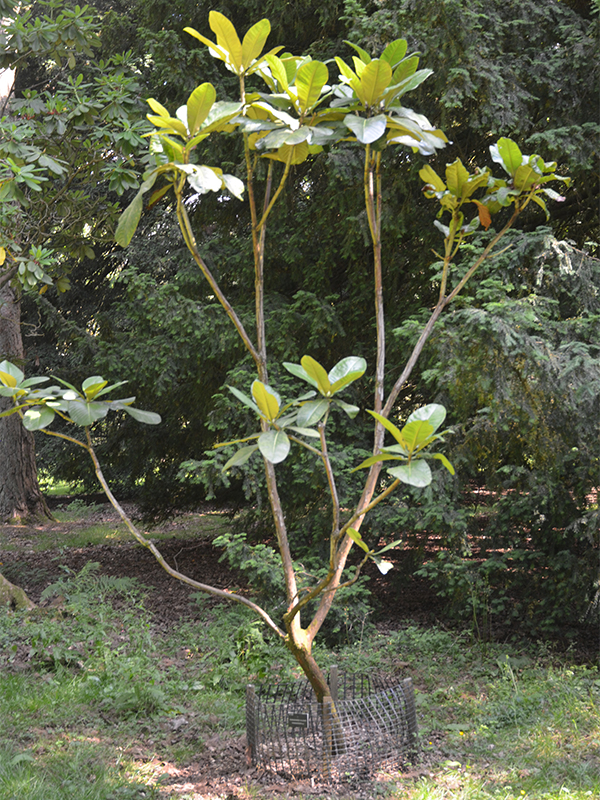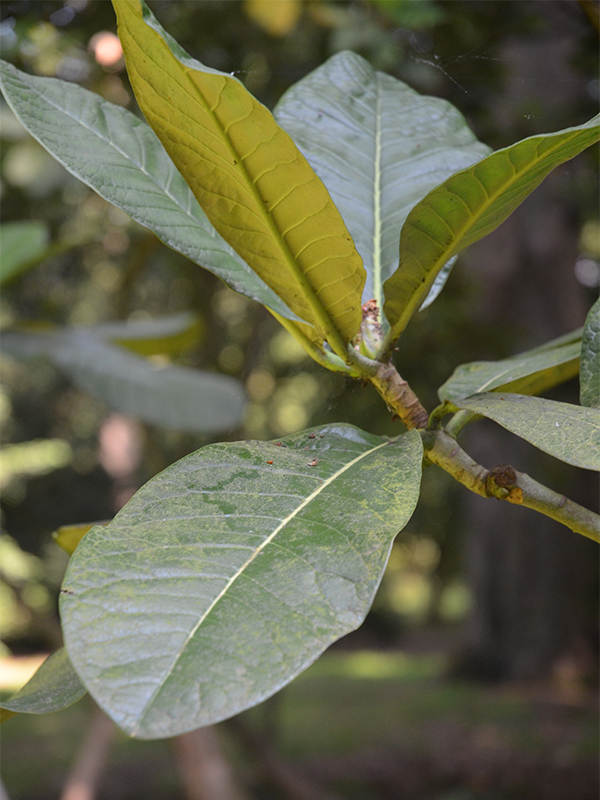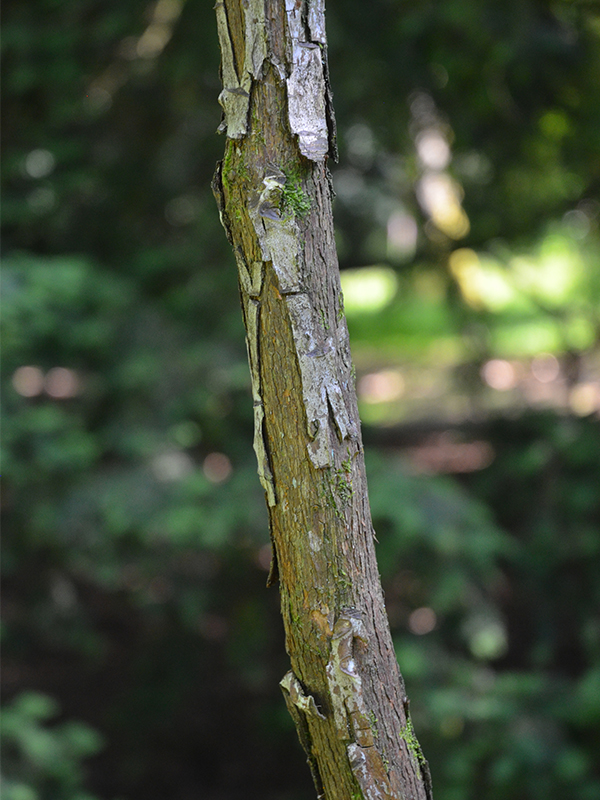| Shape | Upright and bushy. |
| Landscape | Hedges, screens, low maintenance cottage and informal gardens. |
| Propagation | Seed when ripe or semi-rip cuttings in late summer. |
| Cultivation | Prefers partial-shade in moist but well-drained slightly acidic soil. |
| Pests | Vine weevil, rhododendron leafhopper, pieris lacebug, scale insects, caterpillars and aphids may be a problem. Powdery mildews, rhododendron petal blight, rhododendron bud blast, silver leaf and honey fungus may occur. |
| Notable Specimens | Westonbirt, The National Arboretum, Tetbury, Gloucestershire, England. |
| Bark/Stem Description | The bark is flaky. |
| Leaf Description | Wrinkled leaves that are 30 cm long. |
| Flower Description | Bell-shaped flowers that are 5 cm wide and appear in large dome-shaped trusses in mid to late spring. |
| Colour Description | The bark is reddish-brown. The leaves are dark green with a rusty green underside. The flowers are a whitish-cream with maroon blotches. |
| Texture Description | The leaves have a felt-like texture on the underside. The flowers have a waxy texture. |



